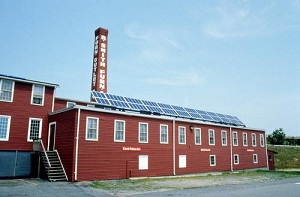Renewable industry experts worry about election results
 Given the recent election results, it’s not likely that Congress will pass meaningful energy legislation that supports renewables and solar in the next two years. That’s according to industry experts and former officials who spoke at Renewable Energy World’s webinar: “The Impact of the Midterm Election on Energy Policy.”
Given the recent election results, it’s not likely that Congress will pass meaningful energy legislation that supports renewables and solar in the next two years. That’s according to industry experts and former officials who spoke at Renewable Energy World’s webinar: “The Impact of the Midterm Election on Energy Policy.”
Despite the likely lack of federal legislative action, state-level legislation and forthcoming rules from the EPA could significantly impact the growth of renewables in the U.S. energy market.
“The broader trends in energy are likely to remain the same,” said David Bernhardt, a previous director of the Office of Congressional and Legislative Affairs with the Department of Interior, now a shareholder with Brownstein Hyatt Farber Schreck. “Renewables will continue to increase from a very small base [of the U.S. power supply].”
But he added that energy will most likely not be at the forefront. Rather, when the new Republican majority takes over in January, they’re more likely to focus on large spending initiatives, he said.
The EPA will take a larger role in controlling emissions, which could positively impact renewable energy, as new rules come into effect starting in 2011.
According to Brownstein’s Mark Matthews, the EPA will have new rules that will affect utilities and coal.
For instance, the pending EPA boiler MACT (maximum achievable control technology) rule will reduce the amount of mercury that coal-fired and other boilers can emit into the air.
During his presentation, Matthews referred to a 2010 Credit Suisse report which projected that up to 150 gigawatts of coal-fired power plants could be retired under the MACT rule alone.
The MACT rule requires that emissions of mercury be no higher than best of overall coal, Matthews said.
“It requires expensive scrubbers and other tech that might not be worth the investment,” he said. That technology could cost upwards of $70 billion on those older plants, and power suppliers may look to alternative sources, like solar, to provide electricity.
Mathews also said that EPA’s tailoring rule, which requires industrial polluters to purchase permits to emit greenhouse gasses, will be an important tool helping to reduce coal-fired generation. The rule also requires large industrial polluting facilities to use the best available control technologies when they remodel or build new facilities.
“It would be nice to see a national renewable energy standard,” Matthews said.
But states will likely take a prominent role in promoting renewable energy policy in the next two years.
For instance, Jerry Brown (D), California’s once and future governor, will make the state’s renewable energy standard a law, said Tom Houston, senior counsel with Brownstein. At this point it is an executive order, signed by Gov. Arnold Schwarzenegger (R).
California and New Mexico are also leading the country in terms of emissions reductions.
Both states have rules pending that will institute cap-and-trade rules for polluters. These regulations will add cost to fossil fuel generation and could help solar and wind become more attractive in the states.
Image courtesy of NREL.



